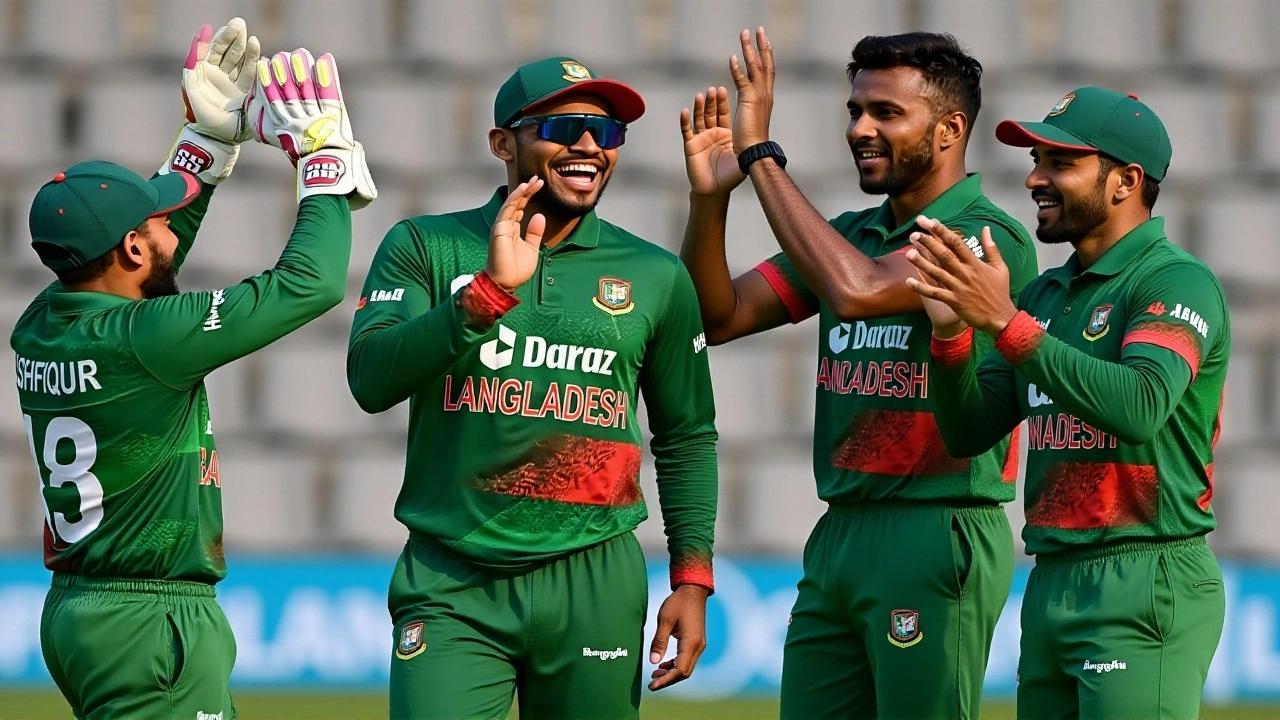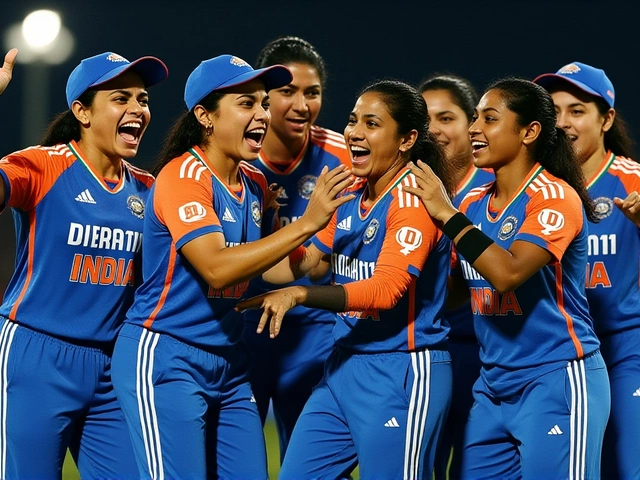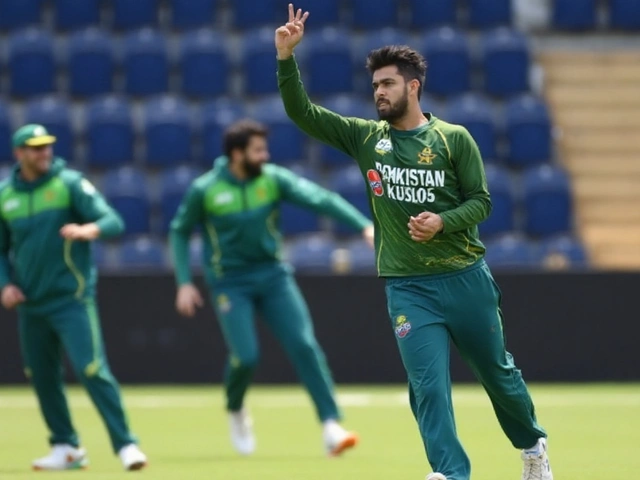Mushfiqur Rahim Retires from ODI Cricket After Winless Champions Trophy 2025

When Mushfiqur Rahim stepped off the field in Karachi after a duck against India on February 26, he didn’t know it would be his final ODI innings. A week later, on March 5, 2025, the 37-year-old wicketkeeper-batsman announced his retirement from One Day International cricket — not with a press conference, not with fanfare, but with a quiet Facebook post and an Instagram caption that said, ‘Alhamdulillah for everything.’ It wasn’t a dramatic farewell. It was the end of a quiet revolution.
A Legacy Built on Consistency, Not Glory
Mushfiqur Rahim didn’t play for headlines. He played for the jersey. For 19 years, from his ODI debut in 2006 until his final match in February 2025, he was the steady hand in Bangladesh’s middle order. No one else in the country has batted in more ODIs — 274 matches — and few have carried the weight of expectation with such quiet dignity. His 7,795 runs at 36.42 aren’t flashy by global standards, but they’re monumental in context. He finished as Bangladesh’s second-highest ODI run-scorer, behind only Tamim Iqbal’s 8,357. And among wicketkeepers worldwide, only Kumar Sangakara, Adam Gilchrist, and MS Dhoni have more centuries. Rahim’s seven are the fourth-most by any keeper in ODI history. He wasn’t just a batter. He was the anchor. When Bangladesh lost to India in the 2007 World Cup, Rahim’s 56 not out gave them the platform to pull off one of the biggest upsets in cricket history. When they faced South Africa in Bloemfontein in 2017, he became the first Bangladeshi to score a century against them in any format. And in 2021, in Colombo, his 125 helped Bangladesh win their first-ever series against Sri Lanka — a milestone that also made him the first Bangladeshi to play 150 international matches.The Weight of the Champions Trophy
The Champions Trophy 2025 was supposed to be a turning point. Held across Pakistan and the UAE, it was meant to be Bangladesh’s chance to prove they belonged among the top eight. Instead, it became a mirror. They lost all three group matches — to India, New Zealand, and Pakistan — and were eliminated without a win. Rahim’s final two innings told the story: a duck against India, two runs against New Zealand. The numbers didn’t lie. At 37, his footwork had slowed. His reflexes, once lightning-fast, were no longer keeping pace with the modern game. He didn’t blame the team. He didn’t blame the pitch. He didn’t blame the pressure. In his statement, he simply said, ‘The last few weeks have been very challenging for me, and I have come to realize that this is my destiny.’ That’s not the language of a man giving up. It’s the language of a man accepting change.
Still Standing in the Test Arena
Here’s the twist: Mushfiqur Rahim isn’t retiring from cricket. Not yet. He remains a vital part of Bangladesh’s Test side, with 94 caps under his belt and on track to become the first Bangladeshi to reach 100 Test matches. His next assignment? A two-Test series against Sri Lanka in April, followed by a home series against New Zealand in May. In Tests, his technique, patience, and leadership still command respect. He took his 100th dismissal as a wicketkeeper in 2017 — the first ever for Bangladesh — and was named in ESPNcricinfo’s Test XI of the Year that same season. His presence in the dressing room, especially for young keepers like Litton Das, remains invaluable. The Bangladesh Cricket Board hasn’t issued an official statement on his retirement. That silence speaks volumes. They know what he’s meant to the game. They don’t need to announce it. The fans already do.What Comes Next?
Rahim’s retirement from ODIs leaves a void. Who will anchor the middle order? Who will provide the calm under pressure? The BCB will look to players like Najmul Hossain Shanto and Najibullah Zadran, but none have his experience. His absence will be felt most in high-stakes matches — the kind where Bangladesh needs someone to bat for 100 balls and not panic. His legacy isn’t measured in trophies. Bangladesh never won a global ODI title under his watch. But they never collapsed without him, either. He was the glue. The quiet constant. The man who showed a generation of Bangladeshi kids that you don’t need to be the loudest to be the most important. And now? He’ll watch from the sidelines — perhaps as a mentor, perhaps as a selector. But for now, he’s choosing peace over pressure. And who can blame him?
Final Numbers, Final Chapter
- ODIs: 274 matches, 7,795 runs, 9 centuries, 49 fifties
- Tests: 94 matches, 4,856 runs, 12 centuries, 26 fifties
- T20Is: 102 matches, 1,827 runs, 1 century, 16 fifties
- Dismissals: 375 in ODIs, 312 in Tests — both records for Bangladesh
- International matches: 470 — the most by any Bangladeshi player
Frequently Asked Questions
Why did Mushfiqur Rahim retire now, after so many years?
Rahim cited personal reflection after Bangladesh’s winless Champions Trophy 2025 campaign as the tipping point. At 37, his ODI form had dipped — scoring just 2 runs in his final match — and he felt he could no longer give the 100% he demanded of himself. He emphasized that his decision was about personal integrity, not external pressure.
Is Mushfiqur Rahim completely retiring from international cricket?
No. Rahim remains active in Test cricket and is on track to become Bangladesh’s first player to reach 100 Test matches. He is expected to play in the upcoming Test series against Sri Lanka and New Zealand in April and May 2025. His retirement applies only to the ODI format.
How does Rahim’s retirement affect Bangladesh’s future in ODIs?
His departure leaves a massive leadership gap in the middle order. With Tamim Iqbal also nearing retirement, Bangladesh lacks experienced batters who can stabilize high-pressure innings. Young players like Najmul Hossain Shanto and Mohammad Naim will be thrust into key roles, but none have Rahim’s 274-match experience — a number unlikely to be matched for decades.
Where does Mushfiqur Rahim rank among global wicketkeepers?
Among wicketkeepers in ODI history, Rahim ranks fourth in centuries (7), behind Sangakara (38), Gilchrist (16), and Dhoni (10). He’s one of only five keepers to play over 250 ODIs. His 375 dismissals in ODIs are the most by any Bangladeshi, and his 312 in Tests are also a national record. Globally, he’s in the top 15 for most dismissals overall.
What was Rahim’s most memorable innings?
Many cite his 56 not out against India in the 2007 World Cup — the innings that sparked Bangladesh’s famous upset. But his 125 in Colombo in 2021 was arguably more significant: it helped Bangladesh win their first-ever ODI series against Sri Lanka, a milestone that also made him the first Bangladeshi to play 150 international matches.
Why hasn’t the Bangladesh Cricket Board commented on his retirement?
The BCB often avoids public statements on player retirements, especially when they’re personal and self-initiated. Rahim’s quiet announcement may reflect a mutual understanding between him and the board. His legacy is already cemented; the BCB doesn’t need to speak to honor him — the fans already do.




